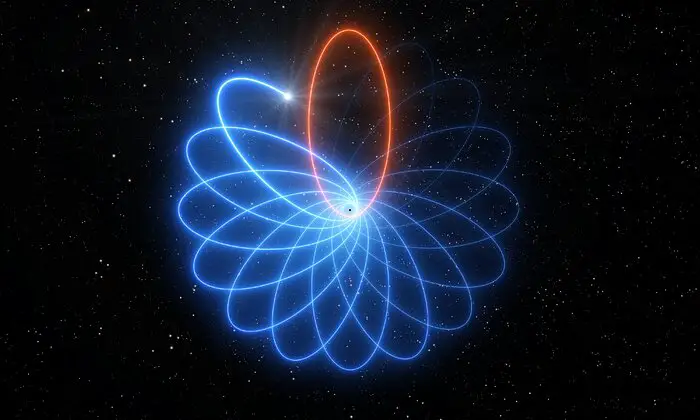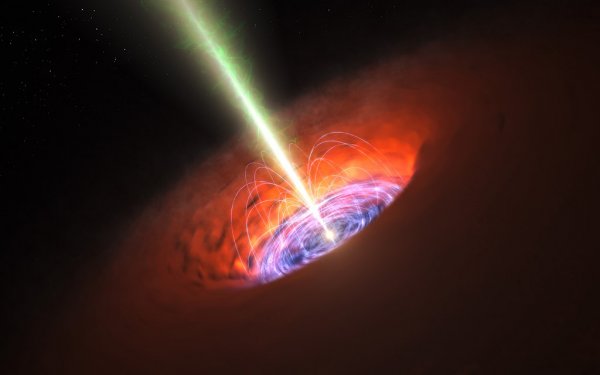First Time Confirmed: A Star Dancing Around Black Hole Inside Our Galaxy Moves As Predicted By Einstein’s Theory
Tags: News

Astronomers working in Chile’s Atacama Desert have for the first time observed a star orbiting the supermassive black hole at the center of the Milky Way galaxy.
The supermassive black hole referred to exists in a region called ‘Sagittarius A*’, situated 26 000 light-years from the Solar System.
While Isaac Newton’s theory of gravity would suggest that the orbit would take the form of an ellipse, this is not the case.
Instead, the orbit of what has been named the ‘S2’ star, is rosette shaped, lending weight to Albert Einstein’s theory of relativity.
In general, orbits are not perfectly circular in nature. Instead, objects move closer or further while rotating, which explains the rosette shape. Using the theory of general relativity, it can be predicted how much S2’s orbit shifts in relation to the supermassive black hole it’s moving around.
“Einstein’s general relativity predicts that bound orbits of one object around another are not closed, as in Newtonian gravity, but presses forwards in the plane of motion,” said Reinhard Genzel, director at the Max Planck Institute for Extraterrestrial Physics in Germany.
Read more: Comet Last Viewed In Ancient Egyptian Times Is Heading Closer to Earth

An artist’s conception of a supermassive black hole – Image credit: ESO/L. Calçada
The studies were made using the European Southern Observatory’s Very Large Telescope.
To ensure precise accuracy in the observations, the program has been in operation since 1995.
The S2 star is not the only star found in the vicinity of the black hole. But it’s thought to the closest to it, albeit 20 billion kilometers away! Each orbit takes about 16 years.
Earlier astronomical evidence of Einstein’s theory
As Genzel explains, this is not the first time that Einstein’s theory of relativity has been proven.
“This famous effect,” he said, “first seen in the orbit of the planet Mercury around the Sun, was the first evidence in favour of general relativity.
“One hundred years later we have now detected the same effect in the motion of a star orbiting the compact radio source Sagittarius A* at the centre of the Milky Way.
“This observational breakthrough strengthens the evidence that Sagittarius A* must be a supermassive black hole of 4 million times the mass of the sun.”
In case you’re wondering what exactly a supermassive black hole is, here is the Wikipedia description:
“A supermassive black hole is the largest type of black hole, containing a mass of the order of hundreds of thousands to billions of times the mass of the Sun.
Black holes are a class of astronomical object that have undergone gravitational collapse, leaving behind spheroidal regions of space from which nothing can escape, not even light.
Observational evidence indicates that nearly all large galaxies contain a supermassive black hole, located at the galaxy’s center…”
Featured Image credit: eso.org
Leave Comment: